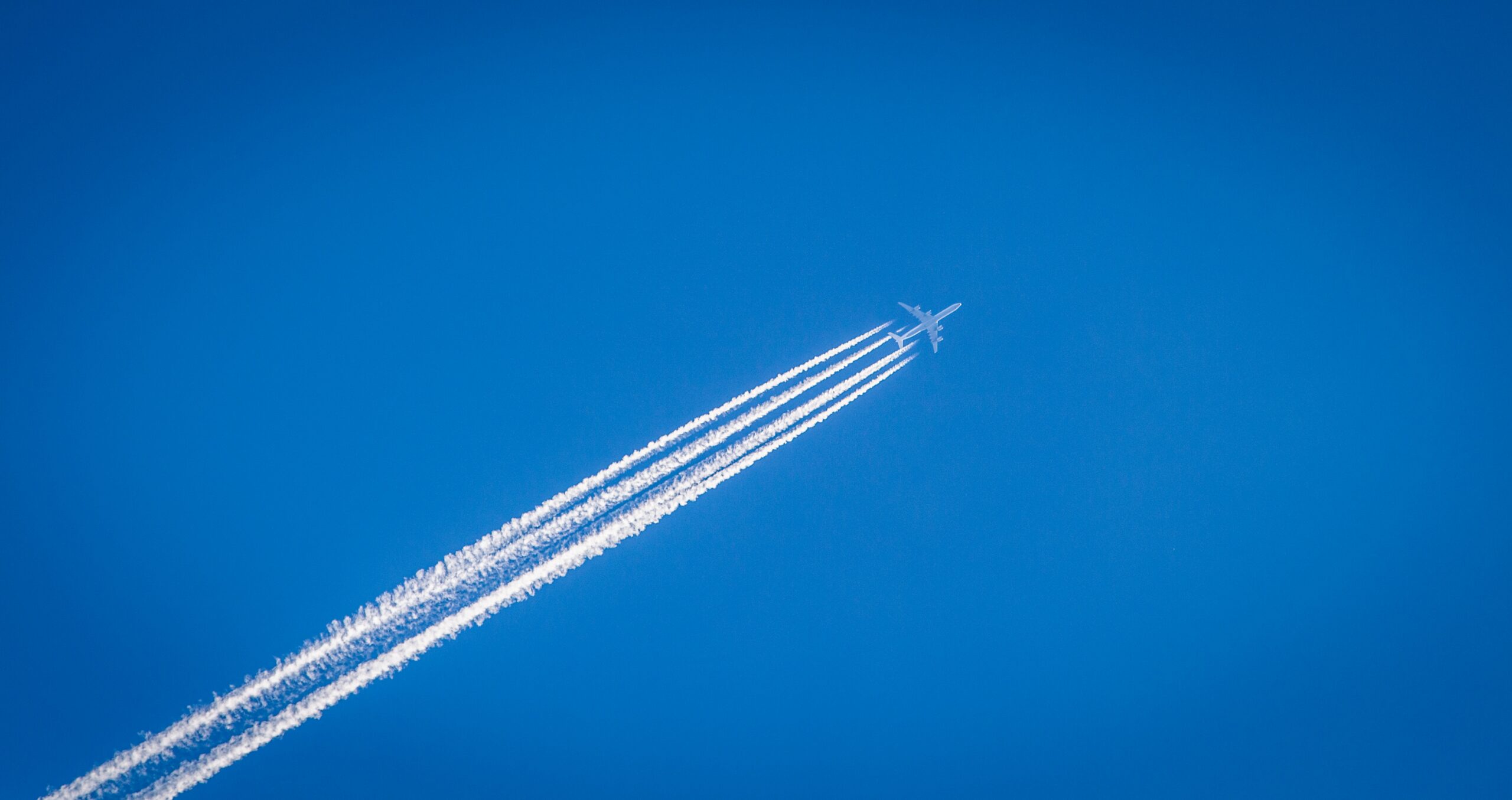Written by Ingrid El Helou
- More than 60% of aviation’s impact on global warming comes from non-CO2 emissions, with contrails making the largest contribution (>50%).
- Flight rerouting is the fastest and most cost-effective means of mitigating contrails.
- Jet fuel that’s blended with SAF and has lower aromatic content must be prioritized for contrailprone flights.
What are contrails?
Most people have probably noticed the white wispy trails that form behind an airplane. These are water condensation trails, better known as contrails. However, not all flights form contrails. For contrails to form, aircraft engine exhaust gases -mainly water vapor and soot – must be emitted at high altitudes (>10 km) into compatible environmental conditions, where the temperature is extremely low and the air is very humid, known as Ice Super Saturated Regions (ISSRs).
Why do contrails matter?

Figure 1 – Distribution of warming impact from aviation’s CO2 and non-CO2 emissions, numbers based on David Lee et al.
(2020).
During the day, contrails can reflect a marginal amount of the sun’s incoming shortwave solar radiation back into space. However, contrails are better at trapping a large amount of longwave infrared radiation coming from the earth’s surface and blocking it from leaving the earth’s atmosphere. This is exacerbated in the evenings, when contrails solely trap heat from escaping. This means that although contrails reflect some solar radiation (cooling effect), they have a net warming effect on the planet. As shown in Figure 1, more than 60% of aviation’s impact on global warming comes from non-CO2 emissions, with contrails making the largest contribution (>50%). However, not all contrails have an equal warming effect. 80% of the contrail-induced warming is attributed to long-lived contrails (>10 min), known as contrail cirrus, which form in turbulent air where they spread out and lose their linear shape, giving them a more cloud-like appearance. To truly put the aviation sector on a more sustainable path, it is not enough to tackle CO-2 emissions. Non-CO2 emissions, particularly contrails, must also be addressed.
How can we eliminate contrails? There are two main ways to tackle contrails:
- Flight rerouting to avoid ISSRs. Studies have shown that about 10% of all flights are responsible for ~80% of contrails. Diverting these flights to avoid ISSRs, and prevent contrail formation, is a high-impact measure that can be implemented quickly and cost-effectively. The main concern with flight rerouting in the past has been that diversions could be long and costly. However, a recent study has shown that small diversions are sufficient to avoid ISSRs with an added fuel consumption of ~2% per flight. With a small percentage of the fleet requiring diversions, this could translate into minimal added fuel consumption for an airline. The climate savings from contrail avoidance then far outweigh the added CO2 emitted.
- Addressing the aromatic content, chemical compounds in the fuel, which is linked to soot formation. Current aromatic content in jet fuel exceeds the minimum safety limit of 8%. The aromatic content of the fuel can be reduced through further treatment in refineries, but this comes with added hydrogen consumption and higher costs. Efforts to increase blending of fossil-based jet fuel with synthetic aviation fuel (SAF) will naturally help to reduce the final aromatic content, as SAFs generally contain little to no aromatics. SAF blending will help to reduce soot formation.
Our main recommendations:
- Ensure emissions reductions targets include non-CO2 emissions, specifically contrails.
- Advance coordinated international rerouting efforts for contrail avoidance.
- Accelerate SAF deployment and prioritize SAF blended fuels for contrail-prone flights.
- Increase stringency of the maximum aromatic content in fossil-based jet fuel.

